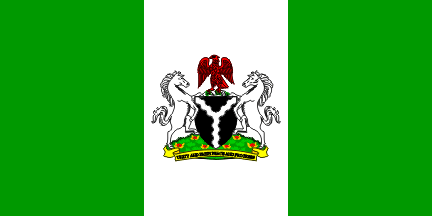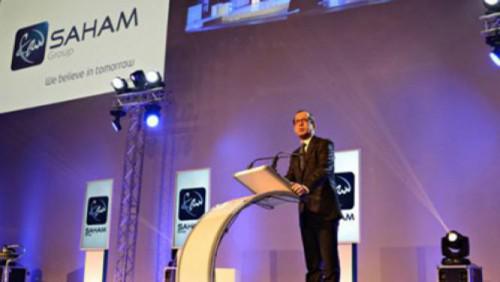When the 2015 general elections were approaching, the ruling All Progressive Congress (APC) preached and campaigned transformation and transition from the status quo that the former ruling People’s Democratic Party (PDP) used in administering the affairs of the nation for nearly two decades.
Nigeria Tax Crackdown: An Imperative for Automated Business Solutions
Nigerian companies must ensure that they have robust, automated payroll systems and processes in place so that they can more easily comply with the demands of an increasingly tough tax regime in the country.
AfDB Unveils ‘New Deal for Energy in Africa’
The African Development Bank Group (AfDB) unveiled its landmark initiative to solve Africa’s huge energy deficit by 2025 at a High Level Stakeholder Consultative Meeting attended by business and political leaders at its headquarters in Abidjan.
A.M. Best: European Insurers Continue Emerging Markets’ Growth
In an attempt to deploy excess capital, some major European insurers have developed overseas operations over the past several years but are now taking a more cautious approach, as not all overseas strategies have proven successful, according to a new report published by A.M. Best.
Retail Index: Nigeria Drops to 4th Position in Africa
The 2015 African Retail Development Index released recently revealed that Nigeria dropped from Number 2 position in Africa to Number 4, though it remains a market to consider on the continent.
Moroccan Insurer, SAHAM, Acquires Continental Reinsurance Plc
Moroccan insurance company, Saham Finances announced, in a communiqué published on 16thSeptember, 2015, the acquisition of 53.6% of the capital of Continental Reinsurance PLC, a reinsurance company operating in 44 African countries.
The Buhari/Osinbajo Assets Declaration: A Way Forward for Nigeria
The recent public declaration of assets by President Muhammadu Buhari and Vice-President Yemi Osinbajo has opened a new vista of public life by public officials in Nigeria.
Entrepreneurship: The Lonely Road to Sustainable Financial Future (2)
I honestly did not plan to pen Part 2 of this article (above) l did last week. But the response from our readers was overwhelming and many requested a follow-up. The message is very clear:
Many Nigerians are eager to leave paid employment behind and plot their own destiny on their own terms.
Socio-economic Challenges Sink African PC Market
The African PC market sank to new lows in the second quarter of the year amid a slowdown in GDP growth, increasing unemployment, and the strengthening of the dollar against many of the continent’s currencies.
The Impact of Low Oil Prices on sub-Saharan Africa
Growth picked up in sub-Saharan Africa in 2014, after moderating in 2013, but remained weaker than during the pre-crisis years. It softened around the turn of the year owing to headwinds from the plunge in the price of oil.
Fidelity Bank: Reaffirming Brand Promise Through Rebranding
In today’s corporate environment, three key ingredients are necessary for any organisation to remain relevant and profitable: Ability to engage the client; dynamism, and flexibility. Very few organisations have exhibited these traits over the past two decades more than Fidelity Bank Plc.
Sovereign Trust Insurance Plc: 20 Years of Fueling Innovative Strategies
Sovereign Trust Insurance Plc is 20!
Planted as a mustard seed in January 1995 following the restructuring and recapitalisation of the then Grand Union Assurances Limited, the company has continued to set the pace in insurance business in Nigeria in the past 20 years.
From initial authorised and paid-up capital of N30 million and N20 million respectively at inception in 1995, Sovereign Trust Insurance Plc now operates with authorised share capital of N5.25 billion and total equity of over N4 billion.
The company became a Public Liability Company (PLC) on April 7, 2004 and was subsequently listed on the Nigerian Stock Exchange (NSE) on November 29, 2006. In recognition of its enviable corporate performance in the insurance industry in Nigeria, Sovereign Trust Insurance Plc was rated A- by Global Credit Rating (GCR) in 2007, 2008, 2009, 2010, 2011, 2012 and 2013.
The considerations for the rating were based on the high claims paying capacity, good mix of businesses across the risk classes, high profile of its multinational oil and gas clients, increased underwriting capacity strengthened by new capital base and geographical spread of its branches nationwide. Currently, the company operates 17 branches across the six geo-political zones of the country for effective marketing of insurance services to Nigerians.
Today, Sovereign Trust Insurance Plc continues to be the lead underwriter for most of the major oil and gas projects in Nigeria, a worthy testament to its high level of solvency, liquidity and financial capacity to underwrite risks in the oil and gas sector of the Nigerian economy.
Going forward, Sovereign Trust Insurance Plc aspires to rank amongst the top five (5) insurance companies in Nigeria.
The Spirit of Recapitalisation
Following the federal Government’s directive on recapitalisation and consolidation in the insurance industry, Sovereign Trust Insurance Plc was amongst the licensed companies to underwrite general insurance business having consummated a merger arrangement with the erstwhile Confidence Insurance Plc, Coral International Insurance Company Limited and Prime Trust
Insurance Company Limited.
The Human Capital Edge
From inception, the company moved from an average industry rating to a leading position, investing in the best of people and technology, improving on processes, growing market share at an average annual growth rate of 30 percent and thereby, expanding its balance sheet size.
The Testament AT 20: NEW AGE. NEW DIMENSIONS.
…born 1995 of optimism; established by character, …born in an era requiring advancement as regards the core of our operations.
Our trajectory could only have made a 20-year count due to enthusiasm, commitment, integrity and delivery.
Our evolution has been constant… With each age came new steps forward, new strategy and expanded horizon. With evident testimonials; we are charged to look to new opportunities, push boundaries and implement good ideas.
20 years on…; gratified by tested results, yet undeniably driven to exceed preceding records. Each attained age unfolds new dimensions for success.
Our Vision
To be a leading brand providing insurance and financial services of global standards.
Our Mission
To enhance the everyday life of our customers through innovative insurance and financial services while creating exceptional value for our shareholders
Core Values
• Superior Customer Services
• Innovation
• Professionalism
• Integrity
• Team Spirit
• Empathy
Corporate Objectives
It is the intention of the company to achieve the following key objectives:
To be a highly professional organisation providing unique risk management services as well as improved claims settlement procedure.
• To achieve a leadership position in the market within the shortest possible time in line with the company’s strategic focus.
• To consistently exploit the under-developed areas of the market by creating innovative products to meet customers’ needs.
• To continuously motivate and enhance the quality of the company’s human resources through the development of a well articulated
training and welfare programme.
• To be a highly profitable organisation that would consistently provide satisfactory returns on investment for our shareholders.
To achieve these objectives, we have assembled a vibrant and purposeful management team made up of highly experienced and result-oriented professionals who are fully poised and determined to contribute meaningfully towards the upliftment of insurance practice in Nigeria.
We are also fully computerised and maintain a good cash reserve for claims settlement.
International Ratings
Just as the dust of recapitalisation was settling down, Sovereign Trust Insurance Plc submitted itself to a thorough solvency and liquidity examination to ascertain the level of its capacity in the industry.
At the end of the exercise, the company was rated A- by the international rating agency, the Global Credit Rating, GCR, in 2007, 2008, 2009, 2010, 2011, 2012, 2013 and 2014 respectively.
The considerations for the rating were based on the high claims paying ability, the good mix of business across the risk classes, high profile of the multinational oil and downstream clients, increased underwriting capacity strengthened by the new capital base and geographical spread of the branches.
Sovereign Trust Insurance Plc continues to be the lead underwriter for most of the major oil and gas projects in Nigeria.
Reinsurance Treaty Cover
We have arranged very adequate reinsurance treaties to enable us accommodate risks with high sums insured and to provide us with the necessary support in the event of large claims.
Our treaties were arranged by Glanvill Re and UAIB Re and placed with a consortium of reputable reinsurance companies.
• African Reinsurance Corporation, Lagos
• Continental Reinsurance PLC Lagos
• WAICA Reinsurance Pool, Lagos
• Nigerian Reinsurance Pool, Lagos
• AVENI Reinsurance Company, Abidjan
• CICA Reinsurance Company, Lome
Products & Services
Sovereign Trust Insurance Plc is presently operating as a non-life insurance company and it has a wide range of insurance products and services that are tailored to meet the specific needs of the company’s clients.
Some of these products include: Marine & aviation, Motor Insurance (Third Party & Comprehensive), Special Risks, Energy Risks, Builders Liability, Healthcare Professional Indemnity, Occupiers’ Liability and Sovereign Wellbeing Insurance scheme for the Family (SWIS-F).
MTN Nigeria to Go Public in 2016
MTN Nigeria will become a Public Liability Company (PLC) in 2016. Accordingly, MTN will list its shares on the floor of the Nigerian Stock Exchange (NSE) by way of public offer for purchase by interested members of the investing public.
Entrepreneurship: The Lonely Road to Sustainable Financial Future
Entrepreneurship is a lonely path. It is a lonely road of earthly bumps, spikes, leaking wallet and sweet sweat at the end of the rough road.
CEO Mworia: ‘Give Yourself Permission to Succeed in Business’
James Mworia is one of Kenya’s most respected business leaders. At 37, he is CEO of Centum, an East African investment company with interests in a variety of sectors, including energy, real estate, financial services and fast-moving consumer goods.
















